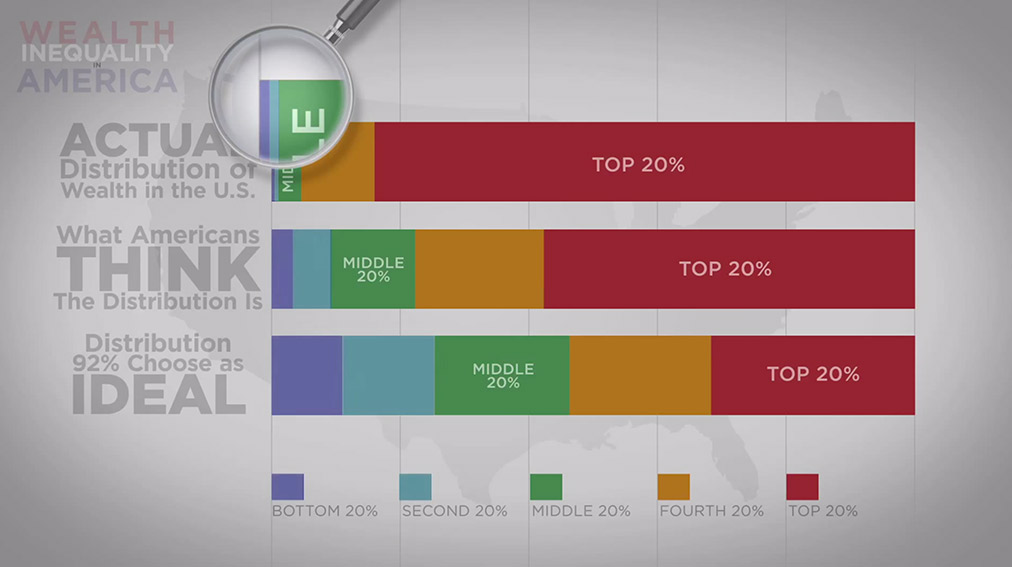This 2012 video shines a light on the two key elements of the current economic scenario in America and its worldwide repercussions.
Firstly, American citizen weren’t aware (at least until 2012) of the wealth distribution processes in the United States. Today, awareness is on the rise, but it wasn’t the case in 2012, in spite of the work of the ongoing Occupy Wall Street movement.
Secondly, economic inequality managed to reach levels that no economist in the past could have been able to imagine. In spite of that, the divergence keeps increasing. In 2000, a UN “World Institute For Development of Economic Research” study reported that 1% of the wealthiest adults possessed 40% of global resources and that the wealthiest 10% detained 85% of total global wealth, leaving half the adult population of the world with only 1% of wealth.
This was 15 years ago. Today, the divide is increasing, as the number of billionaires in the United States multiplied 40 times over within the past 25 years, while the total wealth of the 400 wealthiest Americans experienced an increase from 169 to 1500 billions; growing exponentially throughout the crisis – not to mention the increasing difference between top management salary and employee paychecks (which could amount to a 1:300 ratio), the exploding mortgage bubble and the Machiavellian financial strategies to make the rich wealthier and the poor poorer. This leads us to further questioning. We are used to think about the economic crisis quantitatively, as a lack of resources and capital. It’s commonplace to hear people say things like “It’s a crisis, there are no money”.
On the other hand, we should conceive the crisis qualitatively: capital and resources aren’t scarce, they are distributed differently and in a extremely non-egalitarian way.
